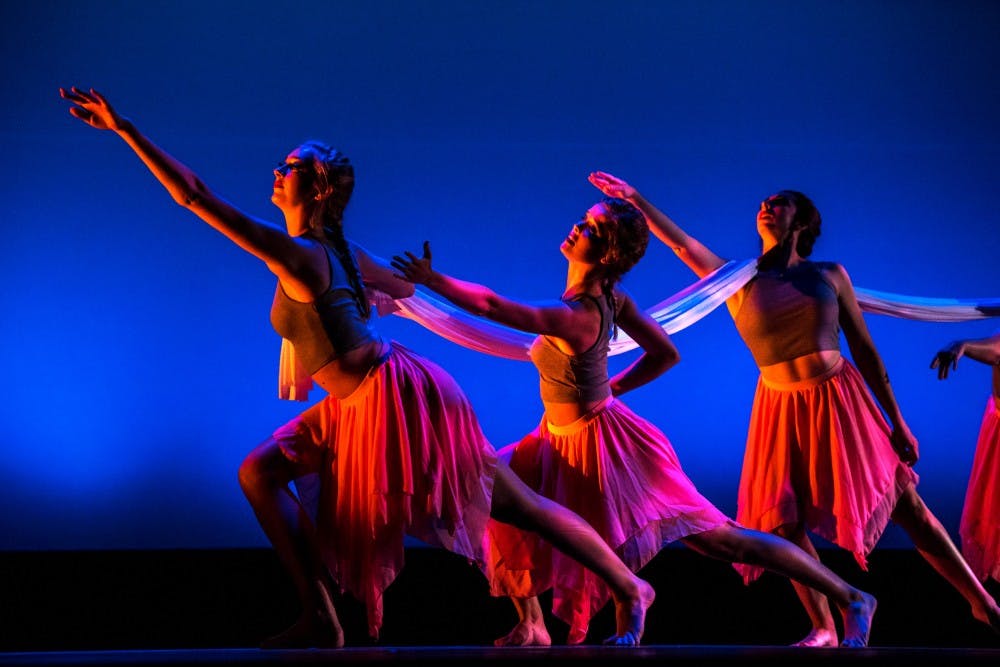As the bright, swirling Technicolor background lit up Hall Auditorium, the audience was instantly pulled in. Dancers in long, medieval gowns began to twirl from behind the curtains until they were interrupted by a young man in full 1970s hippie garb, carrying a boombox playing "Stayin' Alive."
The Dance Theatre's opening number was much like the show as a whole: an eclectic mix of styles of dance, music and costumes that made for a visually dynamic performance.
Miami's Dance Theatre puts on two annual concerts, one each semester of the school year. The spring concert's daring and experimental flair that created a truly spectacular show.
The show, which was composed of ten dances, showcased not only the physical talent of the dancers, but the creativity and vision behind the scenes.
The first routine, entitled "Little Hustler on the Prairie," featured a more classical style of music and dance, with a disruption of psychedelic 1970s funk. The juxtaposition between the two styles created a fun and quirky opening to the show, drawing laughter from the audience with the gentleman's disco moves.
In a number titled "Ruminate," a group of seven dancers performed a dark and dramatic number, touching on themes of women's liberation and stereotypes of the millennial generation. In an avant-garde contemporary style, the group startled the audience with a collective shriek at the end.
A particularly riveting number was a social commentary on the Black Lives Matter movement, performed to Macklemore's musical manifesto, "White Privilege II." With such a controversial subject, a statement was given prior to the number that the dance was an artistic expression and did not necessarily need to be agreed with.
The routine, one of the larger of the show, featured a group dressed in different black and white hip-hop outfits. The dance was an interpretive style of hip-hop, that often coincided with lyrics being rapped in the music. At the end of the number, the cast gathered on stage with signs and pickets, voicing a desire for peace and equality.
Another standout featured soloist Matt Hurtado beginning in the audience and progressing to the stage. The routine, set to impossibly quick tribal music, utilized stacked wooden boxes as props. Hurtado balanced and swung from the boxes, seamlessly incorporating them into the unique number.
From a routine in which the dancers began tied in rope from which they untangled themselves, to a beautiful lyrical number featuring long scarves of fabric, the performance experimented with different props and styles that made for a beautiful visual and immersive experience for the audience.

